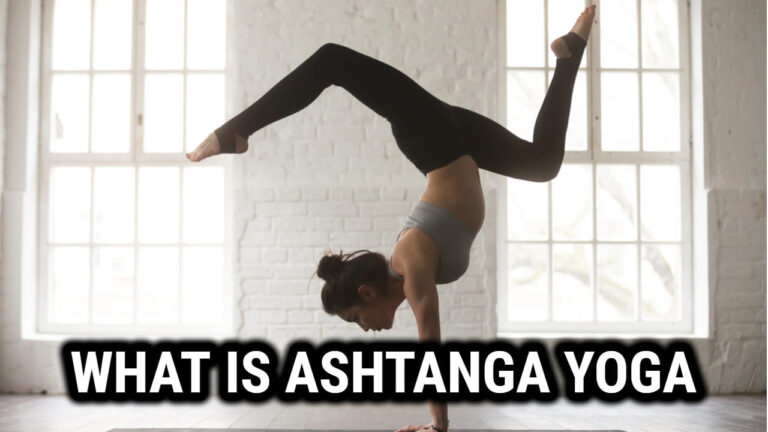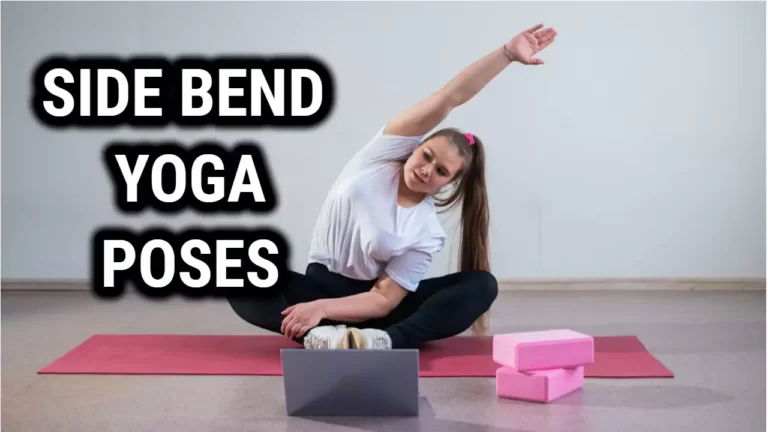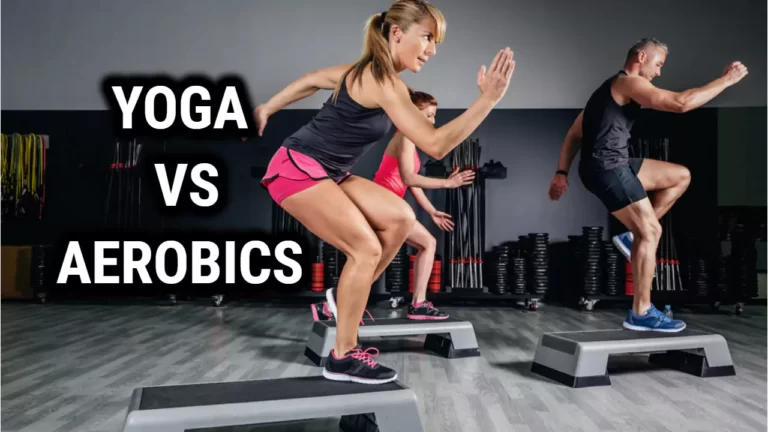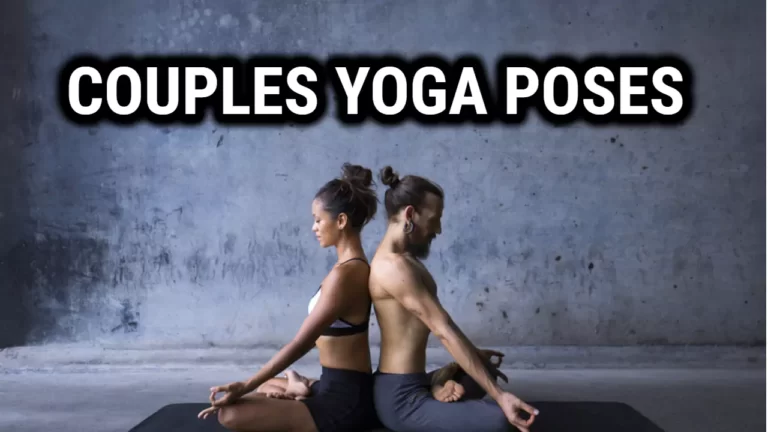Relaxation Yoga for Beginners: A Simple Routine for Stress Relief

Yoga is a form of exercise that is not only great for physical health, but mental and emotional wellbeing too. It’s a great way to relax and de-stress, which is why relaxation yoga is perfect for beginners.
In these two paragraphs, we’ll explore what relaxation yoga is and how it can benefit those new to the practice.
Relaxation yoga is a type of gentle practice focusing on calming the mind and body through mindful breathing, stretching and relaxing poses. It helps reduce stress levels by creating a sense of inner peace while helping to relieve tension in tight muscles.
Through relaxation yoga, beginners can learn how to still their minds, become more aware of their bodies, deepen their breath and build strength at the same time.
What Is Relaxation Yoga?
Relaxation yoga is a practice that combines physical postures, breathing exercises, and meditation.
It’s based on the belief that the body and mind are connected and by bringing the two together in harmony, one can achieve a state of relaxation.
Through regular practice of relaxation yoga, you can reduce stress and anxiety, improve your concentration, increase your flexibility and strength, and find inner peace.
The physical aspect of relaxation yoga focuses on gentle stretching poses that are held for longer than in more active forms of yoga. The breathing exercises help to clear the mind and encourage subtle energy flow throughout the body.
And finally, meditation allows you to observe thoughts without judgment while cultivating peace within.
Ultimately, relaxation yoga can be an excellent tool for creating balance in both body and mind.
Benefits Of Relaxation Yoga
Relaxation yoga is a practice that offers an abundance of benefits to its practitioners. From the physical to the mental, relaxation yoga can help you reduce stress and tension and create a sense of balance and well-being in your life.
Here are just a few of the many benefits it can provide:
- Improved flexibility: Relaxation yoga encourages stretching, which helps to make your muscles more flexible and less prone to injury.
- Increased strength: A regular practice of relaxation yoga helps build strength throughout the body, including core strength in the abdomen and back muscles.
- Improved concentration: Regular practice can aid in calming the mind and developing greater focus, helping with meditation and other forms of mindful activity.
- Reduced stress levels: Relaxation yoga puts a focus on deep breathing techniques that help to relax both mind and body, reducing stress levels overall.
The practice of relaxation yoga has been shown to offer numerous benefits for health, mental clarity, and overall well-being – all great reasons why you should give it a try today!
Techniques For Relaxation Yoga
Are you looking for a way to relax and de-stress? Relaxation yoga is the perfect solution! This type of yoga is specifically designed to promote relaxation and reduce stress, making it perfect for beginners.
In this section, we’ll explore some of the techniques used in relaxation yoga that can help you unwind and find peace.
Relaxation yoga involves maintaining certain poses for longer periods of time, usually between 5-15 minutes. The idea is to focus on the breath and let all other thoughts drift away.
It also encourages you to use props such as blankets, bolsters and blocks to support your body in each pose so that you can stay relaxed while still being comfortable.
Additionally, relaxation yoga often includes the use of visualizations or mantras to further enhance your experience.
By using these techniques along with breathing exercises, you can start enjoying the calming effects of relaxation yoga right away!
Getting Started With Relaxation Yoga
Now that you have familiarized yourself with the techniques of relaxation yoga, it’s time to get started.
To begin, find a comfortable and quiet area. Sitting or lying down in a relaxed position will help you focus on your breathing and achieve the desired relaxation. Make sure you are comfortable and that any physical movements are slow and gentle.
The next step is to become aware of your breath. Take deep breaths, allowing your body to relax as you inhale and exhale slowly. Focus all of your attention on each breath, letting go of any distractions or worries that may be present in the room or in your mind.
This simple practice can bring about an incredible sense of peace, helping you to truly relax and reap the benefits of relaxation yoga.
Common Relaxation Yoga Poses
Relaxation yoga is a great way to help you unwind and reduce stress. There are some basic poses that can be used to start your practice.
Mountain Pose
Mountain pose, or Tadasana, is one of the most basic and essential yoga poses for beginners. This pose will help strengthen your feet and legs while improving posture, balance, and concentration. It also helps to align the spine, relax the neck and shoulders, and open the chest.
To practice Mountain Pose, start by standing with your feet hip-width apart. Make sure your toes are pointing slightly outward and that your weight is evenly distributed on both feet.
Lift your arms up to shoulder level with your palms facing inwards. Then take a deep breath in through the nose and as you exhale draw in your abdomen while pushing out your chest. Hold this pose for 5-10 breaths before slowly releasing it and returning to a standing position.
Remember to keep your body relaxed throughout this pose—both physically and mentally—and concentrate on mindful breathing. Maintaining proper form is key; don’t be afraid to take breaks or modify the pose if needed!
Cat/Cow Pose
The Cat/Cow Pose is an easy and effective way to get into the practice of yoga. It’s great for opening up your spine, and can help you become more limber by allowing you to move in both directions. This pose helps to increase flexibility in the spine, neck, and torso all at once. It is also thought to relieve tension in the back muscles and massage the internal organs.
To do this pose, start on your hands and knees on a yoga mat with your wrists directly under your shoulders and your knees directly under your hips.
As you inhale, arch your back like a cat stretching its back, then exhale as you tuck your chin into your chest and round your spine like a cow doing the same thing.
Repeat this movement slowly several times while paying attention to how it feels in your body so that you can adjust accordingly if necessary.
Downward Facing Dog Pose
The downward facing dog pose is a classic yoga pose that looks like an inverted V. From this pose, you should feel a gentle stretch in your hamstrings and calves. You can practice this pose to help increase the flexibility of your muscles and joints in those areas.
To begin, start on all fours, with your hands and knees on the ground. Make sure that your wrists are directly underneath your shoulders and your knees are directly beneath your hips.
Press firmly into your fingertips and toes as you lift up through the arms and press back with the legs to come into an upside-down V shape. Draw your belly button towards your spine and relax your neck.
Stay in this pose for 5-10 breaths before releasing down onto all fours again.
Child’s Pose
Being a beginner to yoga can be intimidating and overwhelming, but it doesn’t have to be! One of the best ways to ease into your practice is with Child’s Pose.
This pose is a great way to relax your body and mind, while also providing gentle stretching for the back, arms, and legs. It’s simple enough for anyone to do and doesn’t require any special equipment or props.
To begin, start by kneeling on the floor with your knees together and your big toes touching. Slowly lower your torso onto your thighs, so that your tummy is resting against your knees. Reach forward with both arms so that you feel a gentle stretch in the lower back.
If needed, you can use a cushion or rolled up blanket underneath your body for extra comfort. Take several deep breaths in this position and allow yourself to relax as much as possible while keeping the spine long.
When finished, slowly come back up to kneeling before moving on with the rest of your practice.
Seated Forward Bend
Building on the relaxation of Child’s Pose, the Seated Forward Bend is a great way to further open up your body and create more space. This pose helps to ground you and also provides a deep stretch for your spine.
To get into the pose, begin by sitting with your legs stretched out in front of you. Make sure your feet are flexed and your spine is long.
Reach your arms overhead and bend forward at the hips until you can touch or grab onto the toes of each foot. You can also use a yoga strap or belt if needed to help you reach further.
Once in the pose, draw in your navel towards your spine while pressing down through your legs to deepen the stretch. You may even feel a slight tingle as each vertebrae is elongated and stretched out.
Stay here for five breaths, then slowly release back up to sitting position.
This gentle stretch not only helps relax tight muscles but also encourages mental clarity and calms the mind. As an added bonus, Seated Forward Bend aids digestion by helping food move more freely through your intestines!
To make this pose even more beneficial for beginners, try incorporating these two variations:
- Hands on Ankles: Place both hands on either side of each ankle as you fold forward so that you can still keep a straight back while getting an added boost in flexibility
- Knees Bent: For those who are new to yoga or have limited flexibility, begin with bent knees rather than straight legs so that it’s easier to reach forward without straining
Neck Rolls
Taking the time to do some neck rolls is an important part of any beginner’s yoga practice. Not only can it help relieve tension, but it can also increase flexibility and range of motion in your neck. So let’s get started!
| Before | After | |
|---|---|---|
| 1 | Start with your chin tucked into your chest | Gently roll your head from side to side, keeping your eyes closed for extra relaxation |
| 2 | Slowly tilt your head back as far as you’re comfortably able | Slowly tilt your head towards one shoulder until you feel a stretch, then switch and tilt towards the other shoulder |
| 3 | Bring your right ear towards the right shoulder, hold for a few seconds then switch sides | Roll your head clockwise and counterclockwise three times in each direction |
This gentle practice not only helps relax tight muscles, but also strengthens surrounding areas like the shoulders and upper back. As you become more comfortable with these poses, try slowly increasing the number of repetitions or even adding different variations. You’ll be feeling relaxed in no time!
Reclined Bound Angle Pose
After you’ve finished rolling your neck, it’s time to try a new pose: Reclined Bound Angle. This pose is great for beginners because it gently stretches the inner thighs and opens the chest to promote relaxation. It’s also known as Supta Baddha Konasana in Sanskrit.
Here are three reasons why this is an excellent yoga pose for beginners:
- You can control how deeply you stretch your body by adjusting the prop (e.g., blanket or bolster) supporting you.
- It helps release tension from your hips, lower back, and even shoulders if done correctly.
- Deep breathing while in the pose increases relaxation and mindfulness.
So give this one a try! Reclined Bound Angle will help open up your body to deeper relaxation and practice of mindful awareness of your physical sensations. Plus, it requires minimal effort – so go ahead and relax!
Corpse Pose
The Corpse Pose is a great relaxation yoga pose for beginners. This restful pose provides many benefits: it can help to reduce stress, improve posture, and allow you to set aside time for yourself.
To enter into the Corpse Pose, start by lying flat on your back with your feet spread slightly apart and arms at your sides with palms facing up. Make sure your spine is in a neutral position and that your head is relaxed on the floor. Close your eyes and take a few deep breaths in and out, allowing yourself to relax more deeply with each exhale.
Stay in this position for as long as you’re comfortable, focusing on taking slow, deep breaths that fill up your abdomen. As thoughts arise, acknowledge them without judgment before letting them pass away.
When you’re ready to come out of the pose, slowly roll onto one side before pushing yourself back up into a sitting position. Take a few final moments to observe how you feel before transitioning into another pose or ending your practice altogether.
Supine Twist Pose
Now that you’ve mastered Corpse Pose, it’s time to move on to the Supine Twist Pose. This pose helps with back pain, anxiety and fatigue. It can also help with digestion and improve circulation.
Here are some steps to follow so you can get started:
- Lie down on your back, making sure your feet are flat on the ground.
- Bend your right knee and place it across your body so that it is near your left shoulder.
- Place your left hand on the outside of your right leg, while keeping your head in a neutral position in line with the spine.
- Keep both shoulders firmly grounded into the mat and hold the twist for anywhere from 30 seconds to 5 minutes (depending on what feels comfortable).
When done correctly, this pose should feel calming and quite soothing – almost as if you were giving yourself a big hug!
To finish off this pose, slowly bring both knees together and release any tension in your neck or shoulders before taking a few moments of rest in Corpse Pose once again.
Preparing for Relaxation Yoga
Choosing the Right Class
When choosing a relaxation yoga class, look for a class that is specifically labeled as restorative or relaxation yoga. These classes are designed for beginners and will typically involve gentle stretching and deep breathing.
What to Wear and Bring
Wear comfortable clothing that allows for easy movement, such as yoga pants or leggings and a loose-fitting shirt. You may also want to bring a small towel or blanket to use as a prop during class.
Pre-Class Preparation Tips
To get the most out of your relaxation yoga class, try the following tips:
- Arrive early to allow time to settle in and get comfortable.
- Turn off your phone and other distractions.
- Let your instructor know if you have any injuries or medical conditions.
Modifications For Relaxation Yoga
Closing your eyes, you can feel the warm sunrays on your skin as you stand in mountain pose. You take a deep breath and allow your body to loosen as you transition into each new pose.
Modifications for Relaxation Yoga can be done to make this practice more accessible:
- Use props such as bolsters, blocks, and blankets to help support your body in poses
- Move at a slow and steady pace that is comfortable for your level of flexibility
- Focus on keeping good posture during the practice
- Listen to your body’s feedback and adjust accordingly
Relaxation yoga should be practiced gently with an emphasis on connecting with our inner selves. Allowing ourselves to move slowly, yet mindfully through the poses can help us find a sense of peace within our bodies.
Frequently Asked Questions (FAQ)
Here are some common questions people have about relaxation yoga:
What should I wear to a relaxation yoga class?
Wear comfortable clothing that allows for ease of movement. Loose, breathable fabrics like cotton or bamboo are great options.
Do I need to bring my own yoga mat?
It depends on the class or studio you attend. Some provide mats, while others require you to bring your own. Check with the instructor or studio beforehand to find out.
How often should I practice relaxation yoga?
It’s up to you! You can practice relaxation yoga daily, weekly, or whenever you feel like you need a break from the stresses of life. Even just a few minutes a day can make a difference in your overall well-being.
Can anyone do relaxation yoga?
Yes, relaxation yoga is accessible to people of all ages and fitness levels. It’s a gentle practice that can be modified to suit individual needs and abilities.
Is relaxation yoga the same as meditation?
While relaxation yoga incorporates elements of meditation, it also includes gentle stretching and breathing exercises. It’s a more physical practice than traditional meditation, but with similar benefits for the mind and body.
What if I’m not flexible?
No problem! Relaxation yoga is not about being flexible, but rather about gentle stretching and deep breathing. With regular practice, you may find that your flexibility improves over time.
Can relaxation yoga help with anxiety and depression?
Yes, relaxation yoga has been shown to be effective in reducing symptoms of anxiety and depression. It can help to calm the mind and promote feelings of relaxation and well-being.
Can I practice relaxation yoga at home?
Absolutely! There are many online tutorials and classes available that you can do from the comfort of your own home. Just make sure you have a quiet, comfortable space to practice in.
Conclusion
Relaxation yoga is a great way to reduce stress, increase relaxation, and improve your overall wellbeing.
With its various techniques and poses, it’s a form of exercise that can be tailored to fit your individual needs. If you’re just getting started with relaxation yoga, make sure to start slow and gradually work up to more challenging poses.
Don’t be afraid to ask questions or seek out classes so you can learn the proper technique and get the most out of each session.
Relaxation yoga is something anyone can enjoy – so why not give it a try?






